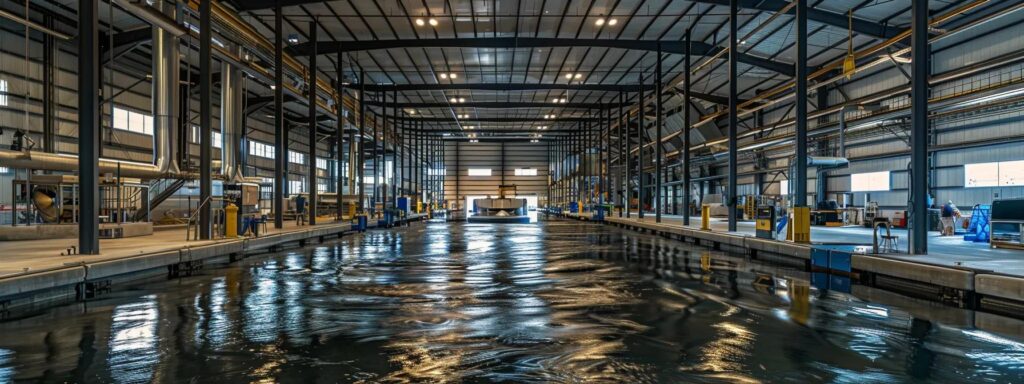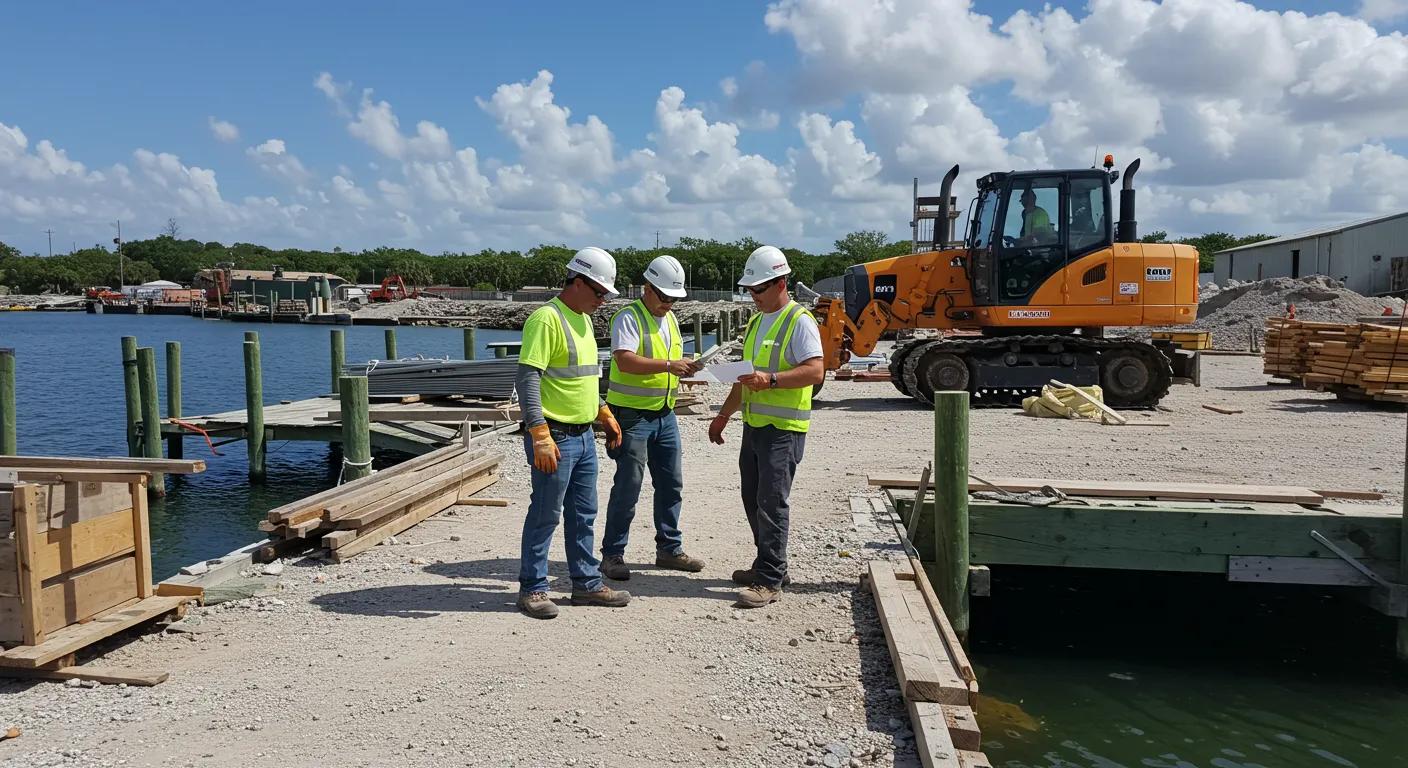Dock Maintenance Best Practices for Longevity
Maintaining a dock is essential for ensuring operational efficiency, safety, and durability. Over time, docks experience environmental exposure, wear and tear, and inadequate upkeep. Regular maintenance prolongs dock life while reducing risks of accidents, costly repairs, and operational downtime. This guide details routines for inspections, cleaning techniques, weather protection, safe equipment usage, seasonal tasks, and material selection to help you achieve a proactive maintenance strategy that minimizes hazards and maximizes efficiency.
Regular Inspections for Reliable Dock Maintenance Practices
Regular inspections form the backbone of effective dock maintenance. Routinely assess the structural integrity, check for visible deterioration, and ensure all fixtures are working as expected. Detailed periodic checks can identify problems such as corrosion, loosened fittings, and damage from heavy equipment impacts, helping prevent accidents and costly repairs.
Check for Structural Integrity of Dock Components
Inspect the main dock structures for any bending, cracking, or material fatigue. Evaluate the deck surface, supporting beams, and underlying framework for even minor imperfections. Small cracks can lead to major failures if left unaddressed. A professional certified in docksafety should perform a biannual check to ensure load-bearing components meet acceptable standards. Signs such as deflection, localized corrosion, or broken support members indicate that repairs may be necessary.
Look for Signs of Wear and Tear on Materials
Exposure to saltwater, sand, and changing temperatures degrades materials over time. Notice discoloration, rust, or splitting of wooden components early to prevent further damage. Use a checklist to inspect accessible surfaces for abrasions, mildew, or cracks. Visual assessments paired with tactile tests can quickly determine the extent of material fatigue, ensuring timely intervention.
Inspect Fittings and Hardware for Tightness
Vibration from docktraffic and weather exposure can loosen fittings and hardware over time. Bolts, screws, and brackets must remain secure, particularly near dock doors or loading dockequipment, to reduce accident risks. Using torque wrenches to confirm that fasteners meet manufacturer specifications is advised. Keeping a log of hardware inspections facilitates timely replacement and ensures compliance with safety standards.
Assess Electrical Systems for Functionality
For docks equipped with lighting, alarms, or automated dock levelers, regular electrical system inspections are vital. Faulty wiring or overloaded circuits can pose fire hazards and cause equipment malfunctions. Regular insulation testing and voltage measurements help ensure electrical components function safely. Maintenance personnel should be trained in electrical safety and dock configuration to troubleshoot issues effectively, and upgrading old systems can enhance overall docksafety.
Evaluate Safety Measures and Equipment
Ongoing safety assessments are crucial. Check emergency stop buttons, fire extinguishers, safety rails, and bollards regularly. Ensure personal protective equipment (PPE) is in good condition and easily accessible. Update safety signage to reflect current hazards and verify that handrails are sturdy. Regular safety drills and reviews of emergency protocols prepare staff for potential accidents and help reduce workplace injuries.
Effective Cleaning Techniques for Dock Longevity

Regular cleaning mitigates the buildup of salt, sediment, and grime, which accelerate dock degradation. A good cleaning routine not only improves appearance but also enhances efficiency by reducing risks of slips, corrosion, and microbial growth while extending the lifespan of dock components.
Use Gentle Cleaning Solutions to Avoid Damage
When cleaning, choose environmentally friendly solutions that do not strip away protective coatings or damage surfaces. Avoid harsh chemicals that may deteriorate materials over time. Instead, opt for solutions formulated for marine environments that effectively break down salt and organic deposits while preserving the dock’s finish. Always follow manufacturer guidelines to ensure compatibility with wood, metal, or composite surfaces.
Rinse Off Salt and Grime Regularly
Salt buildup is common, especially in coastal areas, and it can tarnish metal components and accelerate corrosion. Rinse the dock with fresh water after prolonged saltwater exposure using low-pressure hoses to avoid water intrusion into crevices. Regular rinsing helps form a protective barrier that keeps the dock material intact.
Target Mold and Mildew With Special Products
Wet conditions encourage mold and mildew growth, which can damage surfaces and pose health risks. Use specialized anti-fungal products designed for marine environments to eliminate these hazards. Pay special attention to areas that remain damp, such as shadowed corners and under-support beams. Regular applications and a scheduled mold prevention routine help keep the dock cleaner and healthier.
Schedule Routine Pressure Washing of Surfaces
Pressure washing removes stubborn dirt, sediment, and industrial grime effectively. Use gentle pressure and proper techniques to avoid damaging the dock’s surface. Adjust water pressure and nozzle type according to the material being cleaned. Routine pressure washing improves appearance and reduces slip hazards and equipment malfunctions.
Maintain Clear Water Access Around the Dock
Keeping the water area around the dock clear of debris and sediment is crucial for safety and functionality. Debris can obstruct boat access and hide hazards. Regular dredging or water filtration helps maintain water clarity, while clear water enables early detection of issues like oil spills or chemical leaks.
Proper Weather Protection for Dock Assets
Proper weatherproofing safeguards dock assets, especially in areas with severe climates or saltwater exposure. Applying weather protection techniques minimizes damage from wind, rain, and sun, thereby enhancing dock durability and efficiency while meeting environmental and regulatory standards.
Invest in Quality Covers for Equipment and Furniture
Protect dock equipment and outdoor furniture by investing in high-quality, weather-resistant covers. Designed for marine use, these covers guard against UV rays, moisture, and debris. Regularly inspect and replace covers as needed to ensure optimal protection during extreme conditions.
Implement Drainage Solutions to Prevent Water Accumulation
Excess water can damage dock structures, leading to corrosion and mildew growth. Install drainage solutions like trench drains or permeable surfaces to quickly disperse water away from the dock. Regularly inspect and clear these drainage systems to maintain dry conditions that are essential for both safety and longevity.
Regularly Clear Debris From the Dock Area
A clean dock is a safe dock. Removing organic debris, plastic waste, and natural vegetation prevents obstructions and damage to dock equipment. Establish a regular cleaning schedule to ensure that debris does not hinder operations or contribute to microbial growth, thereby supporting both safety and a professional appearance.
Use Paints and Sealants for Weather Resistance
Applying specialized paints and sealants protects against moisture, UV damage, and wear. These coatings act as barriers against corrosion and degradation, preserving both the aesthetic appeal and the structural integrity of the dock. Reapply coatings on a scheduled basis, especially following harsh weather, using environmentally friendly products that support sustainability.
Inspect for Storm Damage After Severe Weather
After any severe weather event, promptly inspect the dock for damage. High winds, debris, and water surges can cause dislodged fittings or structural weaknesses. Early detection through post-storm inspections enables quick repairs, preventing minor issues from escalating into major failures.
Safe Handling Procedures for Equipment Usage

Safe handling procedures are vital for preventing accidents and ensuring efficient dock operations. Proper training and adherence to safety protocols help personnel manage dock equipment—such as forklifts and dock levelers—safely, reducing risk and maintaining productivity.
Train Users on Safe Dock Practices
Regular training ensures that all dock personnel understand the proper operating procedures for equipment. Training should cover emergency response, use of personal protective equipment (PPE), and situational awareness. Refresher courses and certifications keep both new and experienced employees updated on safety practices, fostering a culture of safety and regulatory compliance.
Implement Weight Limits for Safe Load Management
Overloading dock equipment can lead to structural damage and equipment failure. Establish and strictly enforce weight limits on all machinery, and use load-balancing measures to prevent accidents. Regular checks ensure that weight limits are maintained, reducing risks associated with excessive loading.
Regularly Maintain and Inspect Equipment
Routine maintenance extends the lifespan of dock equipment by identifying wear, corrosion, or malfunctions early. Daily pre-operation checks, along with monthly and annual professional reviews, should be documented in a maintenance log. This proactive approach minimizes downtime and ensures productivity through reliable equipment performance.
Use Proper Lifting Techniques to Avoid Accidents
Proper lifting techniques are fundamental for preventing injuries during the handling of heavy cargo and equipment. Train personnel to lift using their legs rather than their back and use mechanical aids for heavy items. Regular evaluations and ergonomic solutions help reduce strain, lowering the risk of musculoskeletal injuries.
Ensure Emergency Protocols Are Clearly Posted
Clear, visible emergency protocols are critical for a quick response in case of an accident. Emergency stop buttons, fire extinguishers, and first aid kits should be easily accessible and clearly labeled. Post evacuation routes and emergency contact numbers throughout the dock area and perform regular drills to ensure everyone is aware of the correct procedures during an emergency.
Seasonal Maintenance Tasks for Dock Preservation
Seasonal maintenance addresses the unique stresses imposed by changing weather conditions. By scheduling tasks according to seasonal variations, you can reduce emergency repairs and long-term damage while keeping the dock safe and operational.
Prepare the Dock for Winter Weather Conditions
Before winter, implement measures to protect the dock from freezing temperatures, snow, and ice buildup. Insulate sensitive areas, check for water ingress, and apply extra sealants to vulnerable spots. A comprehensive pre-winter inspection helps address existing issues, while temporary windbreaks or de-icing agents add extra protection during the cold months.
Conduct Pre-Summer Checks on Equipment
As summer approaches, assess the dock for overheating risks and material degradation. Pre-summer checks should focus on electrical systems, cooling elements, and ventilation to ensure that high temperatures and direct sunlight do not compromise the dock’s durability. Address vulnerabilities early to minimize downtime during peak operational periods.
Establish a Spring Cleaning Routine
Spring cleaning addresses the wear accumulated over winter. Thoroughly clean all dock components, repaint or reseal surfaces, and repair minor damages before they worsen. This routine removes salt, grime, and organic buildup, prepares the dock for increased activity in warmer months, and provides an opportunity to update maintenance logs.
Plan for Off-Season Storage for Boats
When dock usage is minimal during the off-season, proper storage for boats and equipment is essential. Off-season storage reduces wear and protects assets from extreme weather conditions. Use dry docks or specialized covers to prevent moisture and sunlight damage, and communicate proper storage procedures to maintain safety standards.
Review Maintenance Logs for Any Needed Repairs
Regularly reviewing maintenance logs helps identify recurring issues and prioritize essential repairs. These records provide insight into the dock’s overall health, allowing you to adjust your maintenance schedule and implement corrective actions before small problems become significant hazards. Detailed logs also support regulatory compliance and budget justification.
Choosing Quality Materials to Extend Dock Lifespan

Selecting high-quality materials during dock construction or renovation is one of the most effective ways to ensure long-term performance and safety. Quality materials, such as durable coatings and corrosion-resistant hardware, reduce maintenance frequency and enhance overall efficiency.
Research Durable Materials for Dock Construction
Thoroughly research materials known for their durability in marine environments. Consider options like composite decking for high wear resistance, galvanized or stainless steel to prevent rust, and pressure-treated wood that withstands moisture. Comparative studies and past case histories can guide your selection based on durability and performance under your operational conditions.
Prioritize Environmentally Resistant Supplies
Choose materials that resist UV degradation, saltwater corrosion, and microbial growth. Look for products tested under harsh conditions and backed by certifications verifying their longevity. Materials with anti-fouling properties can reduce the need for chemicals and contribute to lower maintenance costs and enhanced operational efficiency over time.
Consult Professionals for Material Recommendations
Consulting with experienced dock contractors or marine construction engineers can provide insights tailored to your conditions. Professional recommendations ensure that you select materials that balance cost, safety, and sustainability, resulting in a robust, environmentally friendly structure.
Consider Upgrades for Existing Structures
Even older docks can benefit from targeted upgrades. Applying advanced sealants, corrosion inhibitors, or retrofitting outdated components with modern technology can improve safety and efficiency. Upgrading key elements based on regular condition assessments can extend the dock’s lifespan without the expense of a complete overhaul.
Evaluate Cost Versus Longevity of Options
Evaluate the initial material cost against long-term maintenance savings. Investing in higher-quality materials may have a higher upfront cost but can substantially reduce repair frequency and prolong operational life. Detailed cost-benefit analyses that factor in lifecycle, maintenance intensity, and durability ensure that your dock remains cost-effective over time.
Final Thoughts
In conclusion, a proactive dock maintenance strategy that includes regular inspections, proper cleaning techniques, robust weather protection, safe handling practices, seasonal tasks, and quality material selection is essential for long-term durability. Implementing these best practices minimizes risks, reduces downtime, and promotes a safer work environment. Each maintenance component helps preserve the dock’s structural integrity and operational efficiency, leading to improved productivity and cost savings. Continually assess your dock’s condition and adjust your maintenance plan to sustain ongoing success and efficiency.
Frequently Asked Questions
Q: How often should I inspect my dockfor structural integrity? A: Conduct comprehensive inspections at least twice a year and after any severe weather event. Regular checks help identify cracks, corrosion, or loose fittings early, preventing major repairs.
Q: What type of cleaning solution is best for maintaining a dock? A: Use gentle, environmentally friendly cleaning solutions designed for marine environments. They effectively remove salt and grime without damaging protective coatings on wood, metal, or composite surfaces.
Q: Why is drainage so important for dock maintenance? A: Proper drainage prevents water accumulation that can cause corrosion, mold, and structural degradation. Installing trench drains or permeable surfaces helps ensure that water quickly flows off the dock, minimizing long-term damage.
Q: What materials should I consider for extending the dock’s service life? A: Invest in durable materials such as composite decking, galvanized or stainless steel hardware, and pressure-treated wood. Choose environmentally resistant supplies tested for UV, salt, and microbial resistance to reduce maintenance costs and extend lifespan.
Q: How do seasonal maintenance tasks impact overall docksafety? A: Seasonal tasks like winter preparation, pre-summer checks, and spring cleaning address weather-related wear and tear. These tasks keep your dock structurally sound, safe for operations, and ready for peak usage periods.
Q: What training should dockworkers have to ensure safe equipmentusage? A: Dock workers should receive comprehensive training on proper equipment handling, safe lifting techniques, and the use of personal protective equipment. Regular safety drills and refresher courses help reduce the risk of accidents.
Q: Can upgrading existing dockcomponents improve overall efficiency? A: Yes, targeted upgrades such as applying advanced sealants, replacing outdated hardware, and retrofitting with modern corrosion inhibitors can significantly enhance the dock’s longevity and efficiency. Detailed assessments and professional recommendations ensure that upgrades are cost-effective and meet safety standards.




